Related Research Articles
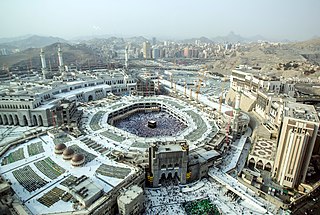
Mecca is the capital of Mecca Province in the Hejaz region of western Saudi Arabia and the holiest city in Islam. It is 70 km (43 mi) inland from Jeddah on the Red Sea, in a narrow valley 277 m (909 ft) above sea level. Its last recorded population was 1,578,722 in 2015. Its estimated metropolitan population in 2020 is 2.042 million, making it the third-most populated city in Saudi Arabia after Riyadh and Jeddah. Pilgrims more than triple this number every year during the Ḥajj pilgrimage, observed in the twelfth Hijri month of Dhūl-Ḥijjah.

The history of Saudi Arabia as a nation state began with the emergence of the Al Saud dynasty in central Arabia in 1727 and the subsequent establishment of the Emirate of Diriyah. Pre-Islamic Arabia, the territory that constitutes modern Saudi Arabia, was the site of several ancient cultures and civilizations; the prehistory of Saudi Arabia shows some of the earliest traces of human activity in the world.

Najd is the geographic center of Saudi Arabia, accounting for about a third of the country's modern population. It is the home of the House of Saud, from which they pursued unification with Hejaz under Saudi rule since the time of the Emirate of Diriyah.

The Hejaz is a region that includes the majority of the west of Saudi Arabia, covering the cities of Mecca, Medina, Jeddah, Tabuk, Yanbu, Taif and Baljurashi. It is thus known as the "Western Province", and it is bordered in the west by the Red Sea, in the north by Jordan, in the east by the Najd, and in the south by the Region of 'Asir. It is the most cosmopolitan region in the Arabian Peninsula. Its largest city is Jeddah, which is the second-largest city in Saudi Arabia, with Mecca and Medina, respectively, being the fourth- and fifth-largest cities in the country.
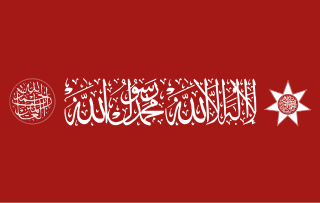
The Hashemites, also House of Hashim, are the royal family of Jordan, which they have ruled since 1921, and were the royal family of the kingdoms of Hejaz (1916–1925), Syria (1920), and Iraq (1921–1958). The family had ruled the city of Mecca continuously from the 10th century, frequently as vassals of outside powers, and ruled the thrones of the Hejaz, Syria, Iraq, and Jordan following their World War I alliance with the British Empire.

Jeddah, alternatively transliterated as Jedda, Jiddah or Jidda, is a port city in Makkah Province, Saudi Arabia, located along the Red Sea coast in the Hejaz region. Jeddah is the commercial center of the country. It is not known when Jeddah was founded, but Jeddah's prominence grew in 647 when the Caliph Uthman made it a travel hub serving Muslim travelers going to the holy city of Mecca for Islamic pilgrimage. Since those times, Jeddah has served as the gateway for millions of pilgrims who have arrived in Saudi Arabia, traditionally by sea and recently by air.
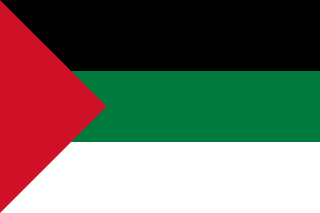
The Hashemite Kingdom of Hejaz was a state in the Hejaz region of the Western Asia that included the western portion of the Arabian Peninsula that was ruled by the Hashemite dynasty. It was self-proclaimed as a kingdom in June 1916 during the First World War, to be independent from the Ottoman Empire, on the basis of an alliance with the British Empire to drive the Ottoman Army from the Arabian Peninsula during the Arab Revolt.

Abdullah bin Faisal Al Saud was a Saudi Arabian businessman, politician, and poet who held multiple posts in the Saudi government throughout the 1940s and 1950s. Prince Abdullah was the eldest son of King Faisal. He served as the governor of Hejaz during the reign of his grandfather King Abdulaziz, and as the minister of health and interior during the reigns of his grandfather and his uncle King Saud. These positions made him one of the most powerful Saudi Arabian royals of his time.

The Unification of Saudi Arabia was a military and political campaign in which the various tribes, sheikhdoms, city-states, emirates, and kingdoms of most of the central Arabian Peninsula were conquered by the House of Saud, or Al Saud. Unification started in 1902 and continued until 1932, when the Kingdom of Saudi Arabia was proclaimed under the leadership of Abdulaziz, known in the West as Ibn Saud, creating what is sometimes referred to as the Third Saudi State, to differentiate it from the Emirate of Diriyah, the First Saudi State and the Emirate of Nejd, the Second Saudi State, also House of Saud states.
Sultan bin Bajad bin Humaid al-'Utaybi was the Sheikh of the Otaibah tribe and one of the prominent leaders of the Ikhwan movement in the Arabian Peninsula. This tribal army supported King Abdulaziz in his efforts to unify Saudi Arabia between 1910 and 1927.
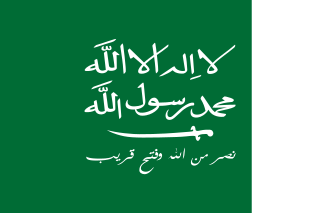
The Kingdom of Hejaz and Nejd, initially the Kingdom of Hejaz and Sultanate of Nejd, was a dual monarchy ruled by Abdulaziz following the victory of the Saudi Sultanate of Nejd over the Hashemite Kingdom of the Hejaz in 1925. It was the fourth iteration of the Third Saudi State.
Saudi Arabian art is contextual to the country being the birthplace of Islam; it includes both the arts of Bedouin nomads and those of the sedentary peoples of regions such as the Hejaz, Tihamah, Asir and Najd.

The Sharifate of Mecca or Emirate of Mecca was a state, non-sovereign for much of its existence, ruled by the Sharifs of Mecca. A sharif is a descendant of Hasan ibn Ali, Muhammad's grandson. In Western sources, the prince of Mecca was known as Grand Sherif, but Arabs have always used the appellation "Emir".

The Vilayet of the Hejaz refers to the Hejaz region of Arabia when it was administered as a first-level province (vilayet) of the Ottoman Empire. At the beginning of the 20th century, it reportedly had an area of 96,500 square miles (250,000 km2). The Hejaz included all land from the southern border of the Vilayet of Syria, south of the city of Ma‛an, to the northern border of the Vilayet of Yemen, north of the city of Al Lith.
The Saudi conquest of Hejaz or the Second Saudi-Hashemite War, also known as the Hejaz-Nejd War, was a campaign engaged by Saudi Sultan Abdulaziz to take over the Hashemite Kingdom of Hejaz in 1924–25, ending with conquest and incorporation of Hejaz into the Saudi domain.

Slavery existed in the area of later Saudi Arabia from antiquity until the 1960s.
Muhammed Hasan Awwad (1902–1980)(محمد حسن عواد) was an author and thinker from Hejaz who was considered to be one of the leaders of the Saudi Arabian literature and philosophy.
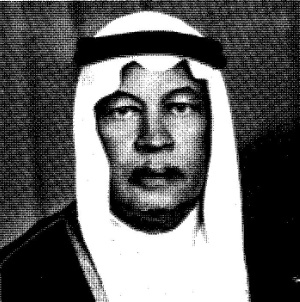
Abd al-Quddus al-Ansari was a Saudi Arabian historian, journalist and writer, born and raised in Medina under Ottoman and Hashemite rule into a Khazraji family. Employed by local government just after graduation from a local madrasah in 1928, he held several official positions from 1928 to 1954. A self-taught historian and archaeologist, he was the author of works about the history of Medina and wrote about various topics of his region, the Hejaz. In 1937, he founded “Al-Manhal” monthly magazine. He also wrote literary works like The Twins (1930), the first Hejazi-Saudi novel, but his many professional activities prevented him from writing more than one novel. He died at the age of 76 in Mecca due to an incurable disease and was buried in Al-Mu'alla Cemetery.

Ahmad Qandil was a Saudi Arabian poet and writer, emerged as a folk-popular poet who centralized Middle class culture in his Hejazi Arabic poetry and prose. Born in Jeddah, he studied and then taught at Al-Falah School, worked around one year as editor-in-chief of Sawt Al-Hijaz newspaper in Mecca, hold some positions in Ministry of Finance such as general manager of Hajj. After retirement from government occupations, he devoted himself to literary writing and media production in an institution he established, through which he cooperated with radio and television of Jeddah. He died at the age of 68 while recording the last episode of his program on Jeddah TV "Ramadan Lanterns", and left many collections of poetry some of which were published after his death.

Mahmud Abd al-Khayr Al Arif, commonly known as Mahmud Arif, was a Saudi Arabian poet. He was born in Old Jedda, Hejaz. After studying in Kuttab for three years, he joined Al Falah School and graduated. He worked as a teacher there for seven years, then moved to government jobs and worked in various office and administrative support occupations, such as: editor, copy typist and lawyer in the Civil Endowments Department of the Sharia judiciary, director of passports and government residency and finally moved to the accounting department. He was chosen a member of the Consultative Assembly until his retirement in 1978. In 1963, appointed as editor-in-chief of Okaz newspaper for a year at the beginning of the new system for journalistic institutions in Saudi Arabia. He is one of the founding members of the Jeddah Society of Culture and Arts in 1975. As a poet, he published many collections of poetry and several other prose books.
References
- ↑ Biographical details in The Literature of Modern Arabia (ed. S.K. Jayyusi), Kegan Paul International, 1988